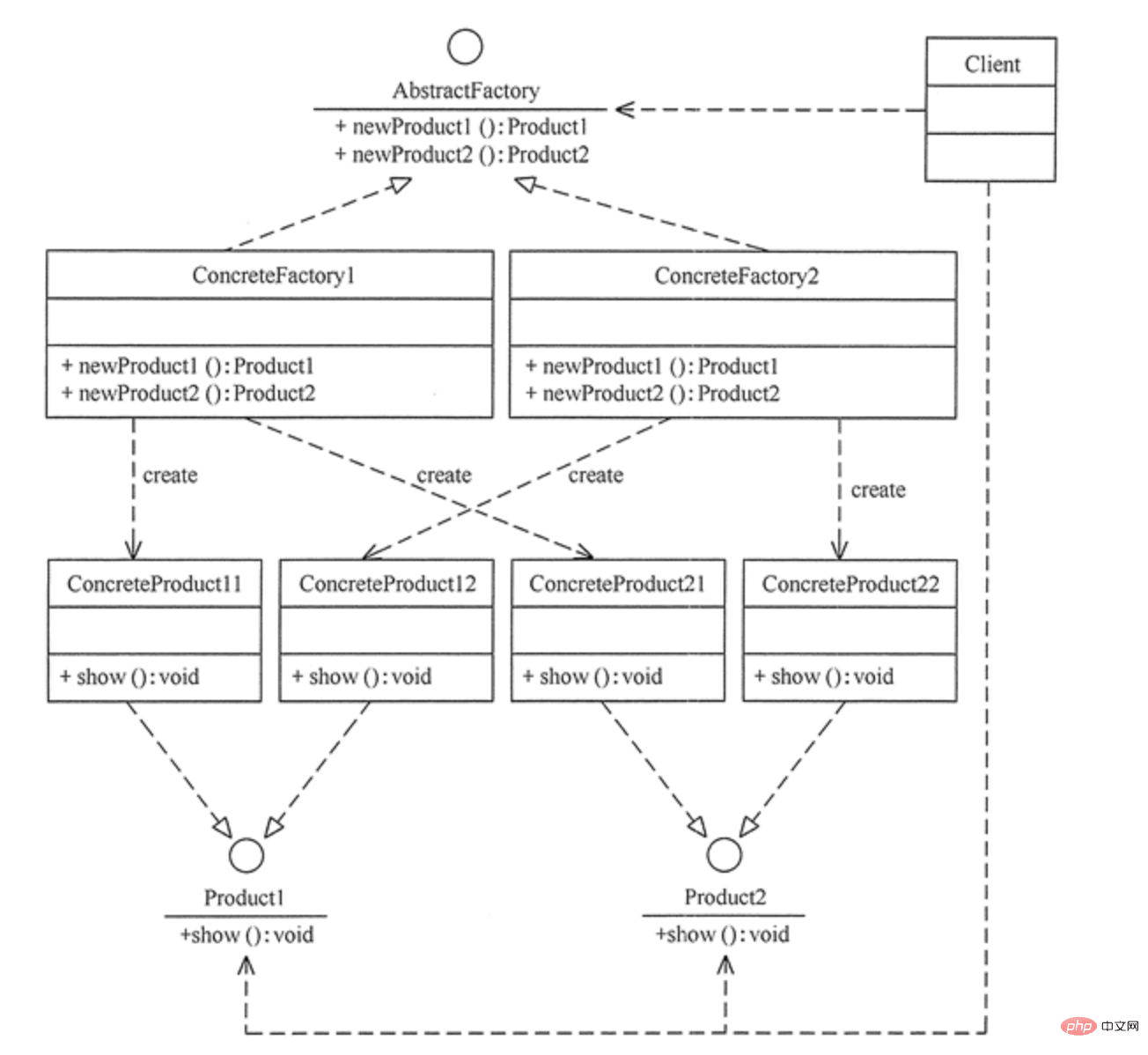
Solve the problem of factory method pattern: A specific factory can only create one type of product, but in the actual process, a factory often needs to generate many products. In this case, the abstract factory pattern can be used.
Definition: Provides an interface for creating a series of related or interdependent objects without specifying their specific classes. The specific factory is responsible for implementing specific products. Example. Enable a factory to produce multiple products.

Abstract Factory (AbstractFactory): Provided The interface for creating products contains multiple interface methods for creating products, which can create multiple products of different levels
Concrete Factory (ConcreteFactory): implements the methods defined by the abstract factory to complete the creation of specific products
Abstract product (Product): defines the specification of the product, describes the main features and performance of the product
Concrete product (ConcreteProduct): implements the method of defining abstract products, and has a concrete factory to create the product , one-to-many relationship between specific factory and specific product
Abstract factory method implementation:
public interface AbstractFactory {
public Product1 createProduct1();
public Product2 createProduct2();
}
public class ConcreteFactory1 implements AbstractFactory {
@Override
public Product1 createProduct1() {
System.out.println("具体工厂1产生具体产品1...");
return new ConcreteProduct1();
}
@Override
public Product2 createProduct2() {
System.out.println("具体工厂1产生具体产品2...");
return new ConcreteProduct2();
}
}Usage steps:
Create an abstract product class and define the public methods of the product
Create a specific product class (implement the abstract product interface) and define the generated specific product
Create an abstract factory class and define the public interface of a specific factory. A factory class can create products of different levels
Create a specific factory class and define methods for creating corresponding specific product instances
The caller calls the method of the specific factory class to create instances of different specific products
Solving the problem: Each factory can only create one type of product, which is the disadvantage of the factory method
Advantages:
You can jointly manage the multi-level products associated with the product within the factory class without having to introduce new classes specifically for management
Abstract factory increases the scalability of the program. When adding a new product family, there is no need to modify the source code to meet the opening and closing principle
Disadvantages:
When the product family is new When adding a product type, all factory classes need to be modified, which increases the abstraction and difficulty of understanding the system
Provided in King of Glory There are many heroes. Heroes are divided into shooters, auxiliaries, junglers, tanks and other professions. Different professions have different skills and attributes. Declare multiple factory subcategories such as tanks, mages, and assassins, and each factory can produce applications of corresponding skills.
The above is the detailed content of How to implement the abstract factory pattern code in Java?. For more information, please follow other related articles on the PHP Chinese website!




